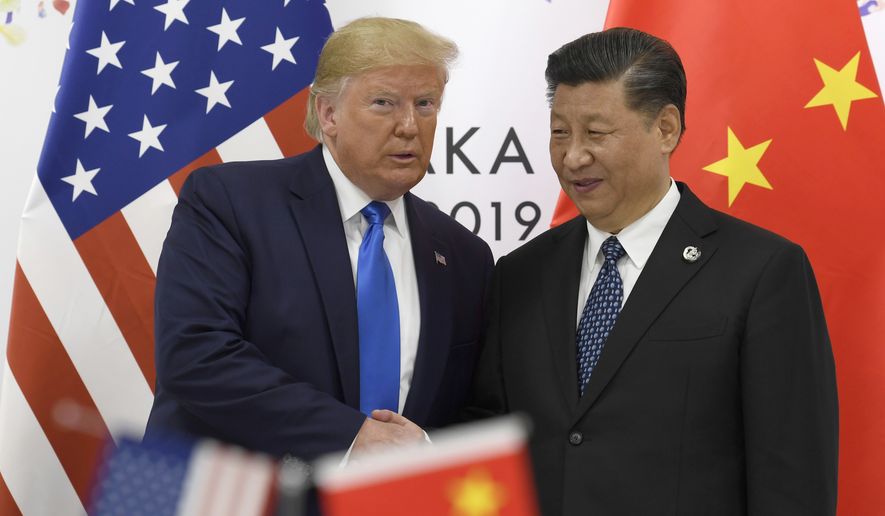President Trump said Tuesday he will sign “phase one” of a trade deal with China on Jan. 15 at the White House and will travel to Beijing later in the year for talks on a larger agreement.
“I will be signing our very large and comprehensive Phase One Trade Deal with China on January 15,” Mr. Trump tweeted Tuesday. “The ceremony will take place at the White House. High level representatives of China will be present.”
He added: “At a later date I will be going to Beijing where talks will begin on Phase Two!”
Earlier, the two sides had said the signing would be held in early January, but a date and location hadn’t been set.
White House trade adviser Peter Navarro told CNBC that the deal has “great stuff in it,” pointing to provisions related to intellectual property theft and access to financial markets.
Early in December, the president had suggested he would prefer to wait until after the 2020 election to reach a trade agreement with Beijing.
Mr. Trump had talked previously of a signing ceremony with Chinese President Xi Jinping, but the South China Morning Post reported this week that Vice Premier Liu He, a top negotiator in the talks, will head the delegation to Washington to sign the trade deal. China’s official press has made no mention of a Trump visit in 2020, and many trade experts predict that future trade deals, focusing on much more contentious issues for Beijing, could be much harder to reach.
U.S. stock markets, which have risen and fallen on Mr. Trump’s previous tweets on the state of the talks, were essentially flat in light of early trading Tuesday.
Mr. Xi, in his traditional year-end address to the nation Tuesday, did not mention the U.S. trade deal in his summary of 2019 or his preview of the year to come.
China and the U.S. have been locked in a trade war with escalating retaliatory tariffs for nearly two years. Beijing announced in early December it would resume large-scale purchases of U.S. agricultural products as the two sides neared an initial agreement.
While U.S. stock markets have enjoyed a strong year, farmers and ranchers have taken a big hit from the loss of the Chinese market and have received tens of billions of dollars in bailouts from the federal government.
In the first-step agreement, the U.S. dropped its plan to impose new tariffs on $160 billion of Chinese imports starting in early December.
The Trump administration also agreed to cut existing import taxes on about $112 billion in Chinese goods from 15% to 7.5%.
In return, the U.S. said China agreed to buy $40 billion a year in farm products over two years, even though U.S. agricultural exports to China have never exceeded $26 billion a year.
Beijing also committed to ending a long-standing practice of pressuring companies to hand over their technology as the price for gaining access to the vast Chinese market. China also agreed to lift certain barriers to its markets for such products as beef, poultry, seafood, pet food and animal feed, according to U.S. officials.
But at the same time, the initial agreement left some major issues unresolved, notably complaints that Beijing unfairly subsidizes its companies to give them a competitive advantage in world markets.
• This article is based in part on wire service reports.
• Dave Boyer can be reached at dboyer@washingtontimes.com.




Please read our comment policy before commenting.